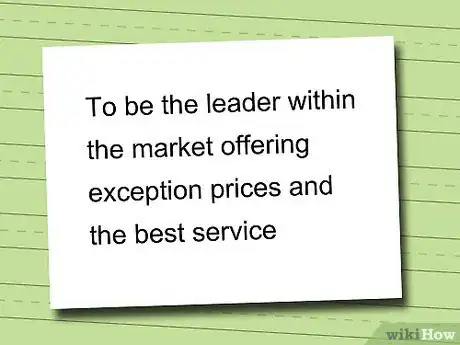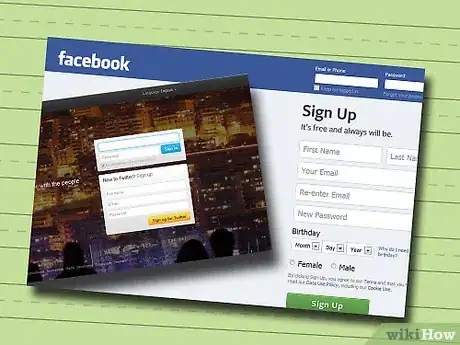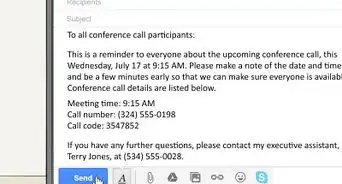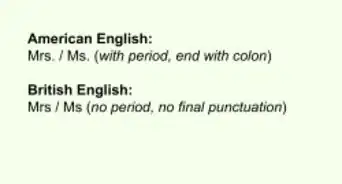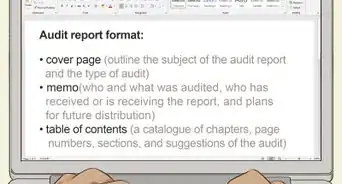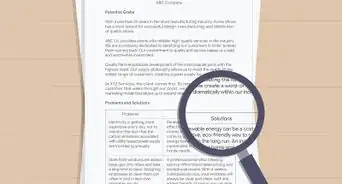wikiHow is a “wiki,” similar to Wikipedia, which means that many of our articles are co-written by multiple authors. To create this article, 11 people, some anonymous, worked to edit and improve it over time.
wikiHow marks an article as reader-approved once it receives enough positive feedback. In this case, 91% of readers who voted found the article helpful, earning it our reader-approved status.
This article has been viewed 123,970 times.
Learn more...
Having a solid strategic communication plan helps an organization share a clearly defined message with everyone involved with that organization -- internally and externally. To write an effective strategic communications plan, you need to define your target audience and the goals and objectives you want to communicate. Our guide will cover the components of a strategic communications plan and how you can tailor them to keep your staff and customers informed and engaged.
Steps
-
1Define your message. There needs to be a clearly defined message you want to send during your strategic communications campaign. Whatever that message is, keep it simple. Try to condense it into a short phrase or sentence. This will be the big idea you keep coming back to. There are several situations for which you need to define a message via a strategic communications plan.[1]
- Reinforce a current idea. Help staff members connect with and support your organization's vision and mission statement.
- Introduce an organizational change. Communicate the problem or challenge and its planned solution.
- Integrate new leaders into the company by announcing them and creating multiple opportunities for staff and customers to hear from them via one-on-one or departmental meetings.
- Re-brand your organization. Give customers a new impression of what your company stands for.
-
2Analyze your target audiences. Communication needs to be shaped to each audience in order to communicate clearly and effectively. As you identify each group, perform an audience analysis to determine what information they need to know. Look at basic demographic information, as well as personalities, your relationship with them, and how your message will affect them.[2]
- Your internal audience involves your staff members. However, you may need to define messages even more specifically for different levels of staff: leaders, middle management, and standard-level employees.
- External audiences include your clients, business partners, and the general public. Though information may overlap, each audience will need a well-defined message.
Advertisement -
3Define your goal(s). Communication needs to be tailored to each group. Identify what you would like each audience to do in response to your message. Some strategic communications plans aim to raise awareness, while others are structured to bring about a change in thought or behavior.[3]
-
4Explore communication outlets. There are many options available to organizations. As you consider different outlets, there are several things you will want to keep in mind.[4]
- Choose communication mediums your audiences will connect with. This might include social media or an online video, both popular with younger generations. It might also involve face-to-face communication, more popular with older crowds.
- Identify any current communication outlets. These provide a natural outlet to communicate important information.
- Look at your budget. If you have a smaller budget for your communications plan, consider using cost-effective mediums, like email and social media. If you have a larger budget, you have more opportunities to utilize other options, like radio and television ads, a direct mail campaign, or posters.
- Consider using multiple outlets for each audience. People tend to remember information better if they receive it in various forms.
-
5Create a time frame. Decide when you will first share this message and how you will continue sharing it over the course of weeks or months. Be intentional. Realize that this time frame is tentative and may need to be modified as you implement your strategic communications plan.[5]
- Consider how often you want your audiences to hear this message. Repetition helps them understand the message and adopt it as their own.
- Recognize that change is a slow process. People's beliefs and actions will not change overnight. Be realistic in your time frame and give people enough time to adjust to your message.
-
6Identify ways to get feedback. Feedback is important throughout the entire strategic communication process. You want to make sure your message is getting across clearly and that there are no misunderstandings. You also want to see if your message is effective.[6]
-
7Get approval. After you have written a draft of your strategic communications plan based on all your research and fitting the needs you devised, run it by anybody who needs to approve it, such as upper leadership or board members. Accept feedback and suggestions, and continue re-writing until you get a strategy everyone is comfortable with.
-
8Implement the strategic communications plan. Delegate responsibilities to different people on staff. Keep an eye on how your message is being received. Adjust your plan as needed to make sure it is effective.
References
- ↑ https://www.odi.org/publications/5186-planning-tools-how-write-communications-strategy
- ↑ http://www.panna.org/sites/default/files/StrategicCommunicationsSPIN.pdf
- ↑ https://bizfluent.com/how-2116678-write-strategic-communication-plan.html
- ↑ http://www.panna.org/sites/default/files/StrategicCommunicationsSPIN.pdf
- ↑ https://www.thecompassforsbc.org/how-to-guides/how-develop-communication-strategy
- ↑ https://knowhow.ncvo.org.uk/campaigns/communications/communications-strategy
